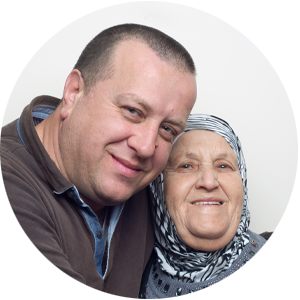What you need to know about getting droopy eyelid treatment in Brooklyn and Manhattan
Droopy eyelid explained
In these toggles we explain what you need to know about droopy eyelid
Drooping eyelid also referred to as ptosis or blepharoptosis, is an uncommon, benign condition where the upper eyelid falls to a lower position than normal and can partially block vision.
symptoms can include:
- One or both upper eyelids sag
- Dry eyes
- Watery eyes
- Aching eyes
- Tired eyes
- The need to tilt your head back see properly
Blepharoptosis can be congenital or acquired.
There are many different possible causes of droopy eyelids, ranging from natural causes to more serious conditions.
Causes include:
- Ageing
- Congenital
- Various medical disorders
- Trauma
To diagnose droopy eyelid, we will perform a physical exam and ask you about your medical history. We will need to know how often your eyelids droop and how long this has happened.
We may run some tests such as a slit lamp exam where we can examine your eye up-close under a light, and a tensilon test where we inject a drug into your vein to see if it improves your eyelid muscle strength.
Blepharoplasty
The treatment for droopy eyelid depends on the cause and severity. However, an effective and permanent solution is blepharoplasty.
This is a cosmetic surgical procedure on the eyelids that can significantly improve their appearance. We make small incisions to redistribute or remove fat deposits, tighten muscles, and remove excess skin layers.
We make the incisions in very deliberate areas that are hidden by the natural folds of the eyelids. As a result, the incisions are hardly noticeable or not noticeable at all.
Discover your options to get your eyes back in top shape
Call us and we’ll help you take the steps you need to repair your eyes
How to get help
These 3 easy steps allow you to stop worrying about your eyes
STEP 1:
Call us to get an appointment
Give us a call at (718) 630-1010 and we’ll answer the questions you have so that we can recommend the best next step.
STEP 2:
Visit us
Whatever the issue, we’ll provide you with the exceptional care that your most precious sense deserves.
STEP 3:
Get the help you need
Whether it’s a quick intervention or a long-term treatment plan, we’ll guide you with compassion, every step of the way.
Affiliations and memberships
We are proud to be associated with these professional organisations
Discover your options to get your eyes back in top shape
Call us and we’ll help you take the steps you need to repair your eyes
What our patients say
★★★★★
We’ve been getting 5-star reviews from savvy Brooklynites and New Yorkers for over 20 years


Dr.Khosrof is one of the most knowledgeable doctors in his field. My family and I have been his patients for years and he has never failed to provide us tip top service and always does what’s safest for us and our eyes…


I want to talk about Dr. Samer, he is extremely professional and kind and he has the latest equipment and great staff. He’s very caring about his patients and takes the time to explain.


Dr. Khosrof is an outstanding physician and surgeon with a great bedside manner. As a fellow Ophthalmologist, I have always been impressed by his talent.


Dr. Khosrof improved my eye sight from 20/400 to 20/80. I had previously see 2 other retina specialists and 1 optometrist and none of them were able to help me. He’s terrific!
About the expert
Dr. Samer Khosrof | Ophthalmologist
Dr. Samer Khosrof is a top eye surgeon in New York City with over 25 years of experience treating complex eye conditions such as diabetic retinopathy and age-related eye conditions.
His extensive experience enables him to stay on top of the latest treatments available. He believes in the efficacy of medical technology and has the expertise to deploy the newest diagnostic and treatment techniques to treat his patients with 100% confidence.
When you become a New York Eye & Retina Clinic patient; you’re a Samer Khosrof patient first. This means he sees you before your surgery, he performs your surgery, and he provides your aftercare. In the end, you’re his patient, and he takes that responsibility very seriously.
































